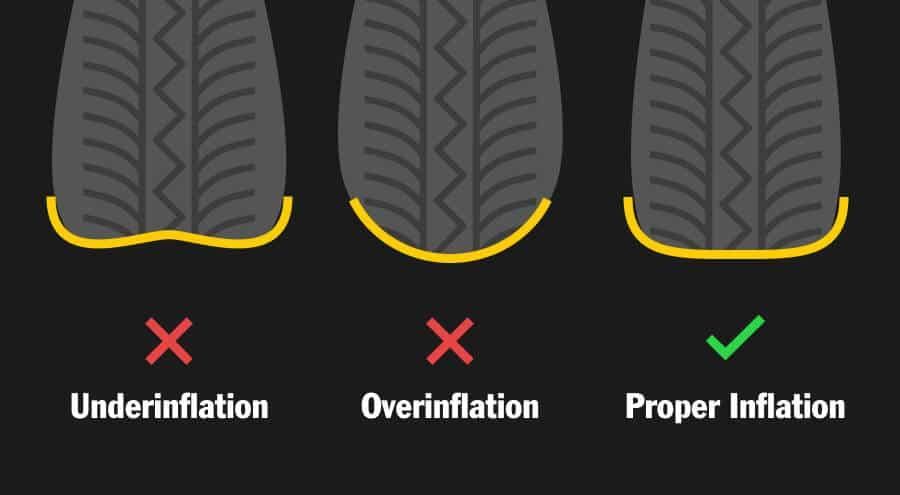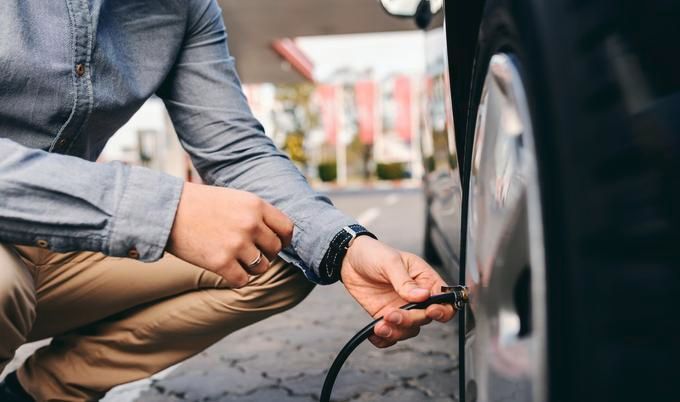Tire Pressure Myths Debunked: Why ‘Just Fill It to the Sidewall’ is Wrong
NaTasha Brand • July 22, 2025
San Angelo, Texas — we need to talk. About tires.

Yes, those round rubber things on your ride. Specifically, we’re talking about tire pressure and the myth that just refuses to die: “Just fill it to the pressure on the sidewall.”
Here’s the cold, inflated truth: the pressure printed on your tire’s sidewall is the maximum it can safely handle—not the pressure your vehicle needs. That number is more like a "do not exceed" speed limit on the highway of tire inflation. It's not a recommendation—it's a warning.
Myth Busted: Sidewall ≠ Recommended Pressure
The correct tire pressure for your vehicle isn't a one-size-fits-all deal. It's tailored to your car’s weight distribution, suspension, and handling specs. You'll find the real numbers on a placard inside your driver-side door or in your owner’s manual. Trust us, that’s what the engineers designed your ride for—not some generic number molded into a tire.
Why It Matters in San Angelo
In a place like San Angelo, where temps can go from “sweater weather” to “Texas toast” in a single afternoon, proper tire pressure isn't just good advice—it’s essential.
Let’s break it down:
🔧 Fuel Economy
An under-inflated tire increases rolling resistance—basically, your car has to work harder, and that means burning more gas. With prices climbing faster than a jackrabbit on a hot griddle, you want every MPG you can squeeze out.
🔧 Tire Longevity
Too much pressure = center wear.
Too little = shoulder wear and heat build-up.
Either way, you're shortening the life of your tires and tossing money down the pothole.
🔧 Safety First
Improper tire pressure can lead to blowouts, hydroplaning, and longer stopping distances. Especially during sudden rainstorms or high-speed highway travel, your tires are the only thing between you and the pavement. You want them performing at their best.
Need a Pressure Check? We’ve Got You Covered.
At Ric Henry’s Auto Service here in San Angelo, we don't just fix problems—we prevent them. Our experienced technicians use the same diagnostic tools and equipment the dealership does, but without that dealership price tag.
We offer comprehensive auto repair services, from quick maintenance to major overhauls. Need a tire rotation, alignment, or pressure check? Done. Transmission, suspension, or A/C giving you grief? We’re on it.
And here’s the kicker—we back every service with a 3-year/36,000-mile warranty. That’s peace of mind rolling right out of the parking lot.
TL;DR: Stop Trusting the Sidewall
Your tires are crucial to performance, fuel efficiency, and safety. Don’t guess. Don’t trust myths. And for goodness’ sake, stop inflating your tires based on a number that’s meant to scare you, not guide you.
Instead, roll into Ric Henry’s Auto Service and let us help you get it right. We’re your hometown experts—proudly serving San Angelo with knowledge, tools, and a Texas-sized commitment to doing the job right.
Until next time, stay inflated—but not overinflated. 😉


Here in San Angelo, our vehicles face it all: the dust of West Texas backroads, the blazing heat on Chadbourne Street, and the occasional surprise chill. Through it all, we trust our engines to get us to the Concho River or out to the lakes without a second thought. But deep within that trusted powerplant, a critical component might be slowly elongating, turning into a literal ticking time bomb. Let's talk about timing chain stretch, the silent engine killer. The Conductor of the Internal Combustion Orchestra First, what is this thing? Your timing chain (or belt, in some cars) is the mini maestro of your engine. It’s the critical link that synchronizes the rotation of the crankshaft (the part that goes up and down with the pistons) and the camshaft (the part that opens and closes the valves). This precise coordination ensures that fuel and air enter, combust, and exit at the exact right millisecond. When the timing is perfect, your engine purrs with efficiency and power. When it’s off, even slightly, the performance symphony descends into cacophony. The Slow Stretch: Causes & Symptoms Unlike a snapped timing belt which often causes catastrophic failure, a stretching chain is a master of deception. It doesn’t happen overnight. The primary culprits are: • Mileage & Wear : Simply put, everything has a service life. Over thousands of miles and millions of cycles, the chain's pins and bushings wear down. • Poor Lubrication : This is the big one. Old, sludgy oil or infrequent oil changes are public enemy #1 for your timing chain. The chain relies on a constant bath of clean engine oil for lubrication and cooling. In our Texas heat, oil can break down faster. Skipping an oil change isn't just about the oil itself; it's starving this vital component. • Faulty Tensioners : The chain tensioner’s job is to take up slack. When it fails, it allows excess movement, accelerating wear and stretch. So, how do you know your maestro is losing the beat? Listen and feel: • The Tell-Tale Rattle : A persistent rattling or clattering noise from the front of the engine, especially at startup or at low RPMs, is the classic harbinger. • Check Engine Light : The engine’s computer is precise. As timing drifts, it will often trigger codes related to cam/crank correlation. • Performance Woes : Sluggish acceleration, poor fuel economy, rough idling, or even misfires. The engine is literally out of sync. Why This Isn't a DIY Project for Your San Angelo Garage We get it. The DIY spirit is strong. But timing chain replacement is a deep-engine surgery. It requires: • Specialized tools (cam lock bars, crank holders) to lock the engine in time. • Meticulous disassembly, often involving the front of the engine. • Absolute precision in reassembly. Being one tooth off can lead to bent valves, damaged pistons, and an engine that won’t run, turning a repair into a replacement. This is a job where "close" isn't good enough. It requires the expertise and equipment of a seasoned professional. Your San Angelo Solution: Ric Henry’s Auto Service When the rattle starts and your engine’s timing is in question, you need a shop you can trust with the heart of your vehicle. At Ric Henry’s Auto Service, we treat timing chain jobs with the seriousness they deserve. Our experienced technicians are equipped with the same advanced tools and diagnostic equipment the dealerships use, ensuring a precise and reliable repair. We don’t just stop at the repair. We offer the comprehensive maintenance that prevents these issues, like routine oil changes with quality fluids tailored to our climate. And because we believe in our work and your peace of mind, every service we provide is backed by a strong 3-Year/36,000-Mile Warranty. Don’t let a stretched chain lead to a snapped budget. If you’re hearing unusual sounds from under the hood, trust the pros at Ric Henry’s to diagnose it accurately and fix it right the first time. Think of it this way: a timing chain replacement is far cheaper than a new engine. Let’s keep your engine's timing as perfect as a San Angelo sunset.




Share On: